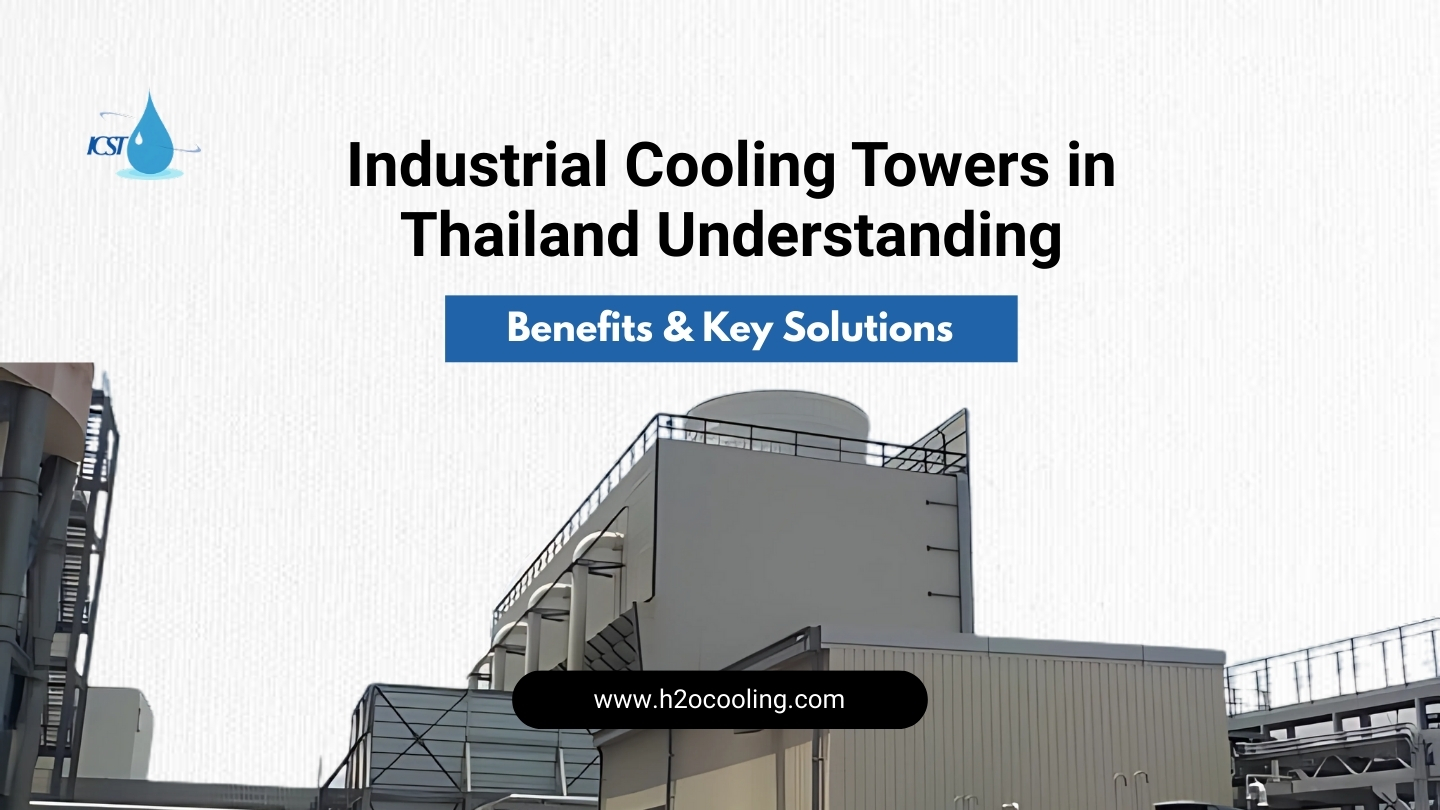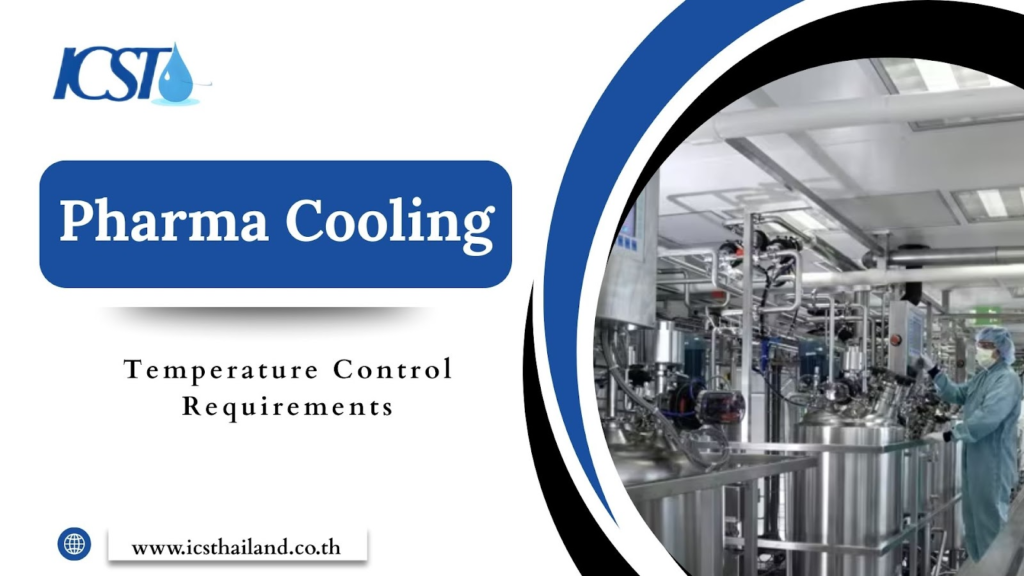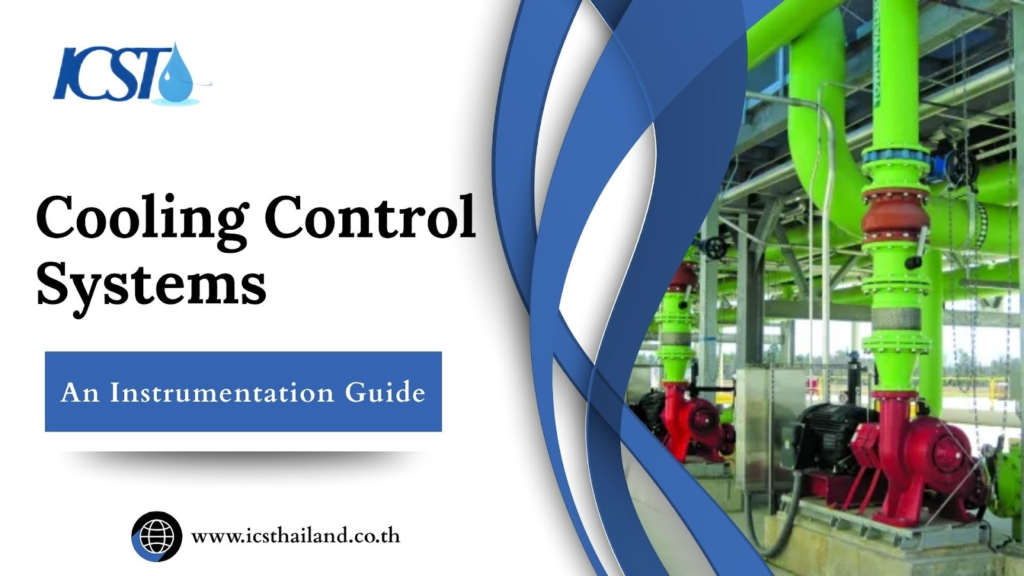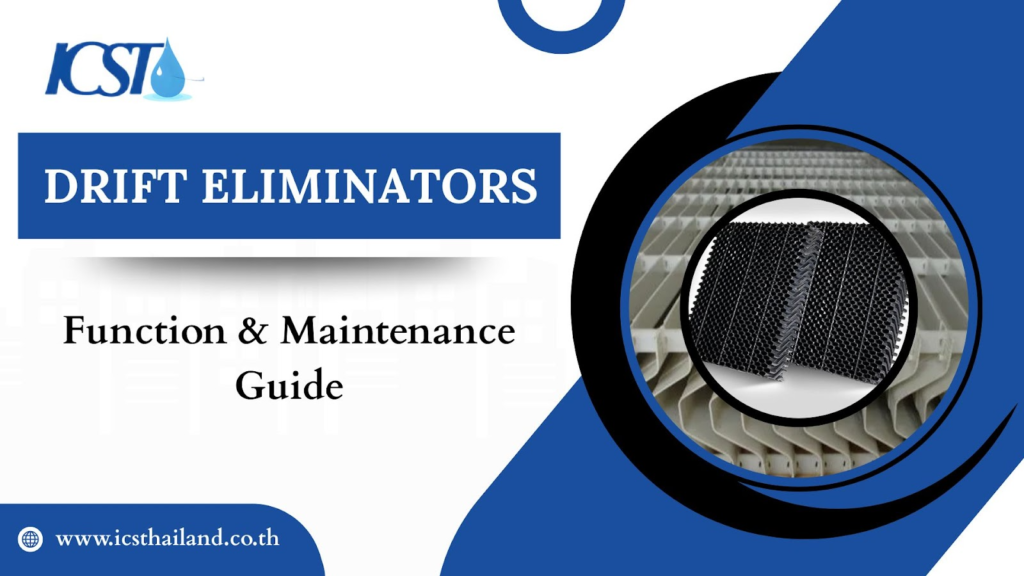In the bustling industrial landscape of Thailand, industrial cooling towers are often the unsung heroes, working diligently behind the scenes. They are absolutely vital, ensuring that the engines of production—from power generation facilities to food processing plants—run smoothly and efficiently by managing the immense heat generated during manufacturing processes. These feats of engineering are indispensable for heat management, playing a critical role in Thailand’s growing economy. But what exactly goes on inside these structures? How do industrial cooling towers work their magic, and why are they so crucial, especially in a tropical climate like Thailand’s? Let’s dive into the world of industrial cooling, exploring their function, types, applications, and the essential solutions they offer.
Table of Contents
ToggleWhat is an Industrial Cooling Tower and How Does It Work?
Think of an industrial cooling tower as a large-scale heat rejection device. Its primary job is to cool down water that has absorbed heat from industrial equipment or processes.
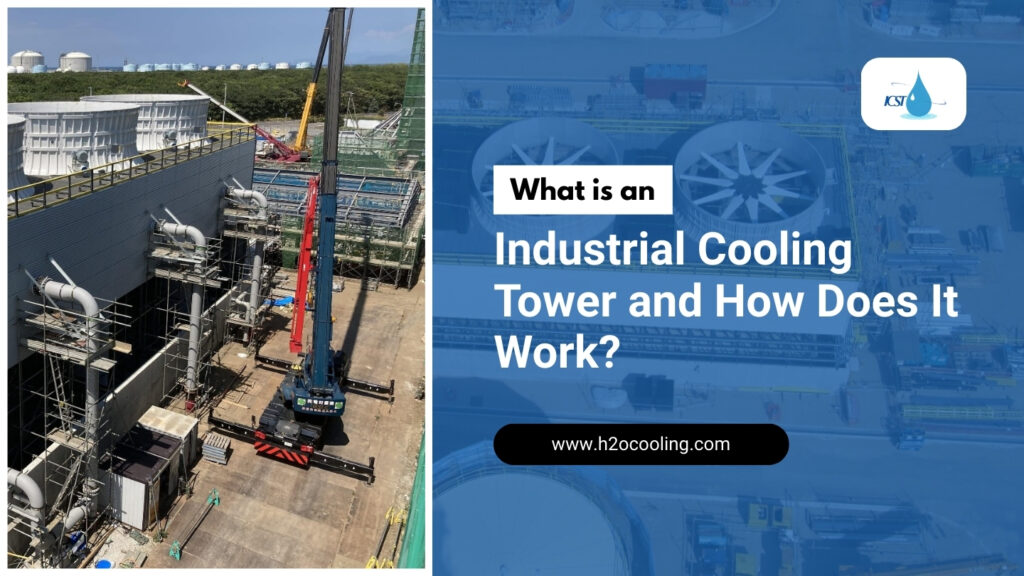
Defining the Purpose
At its core, a cooling tower transfers waste heat from a process water stream into the atmosphere, primarily using water evaporation. It acts like a massive heat exchanger, taking warm water from chillers or machinery, cooling it down, and sending it back to continue its cooling task. This continuous cycle is fundamental for maintaining operational efficiency and preventing overheating in countless industrial and commercial systems across Thailand.
The Cooling Process Explained
So, how does an industrial cooling towers actually cool the water? It’s a fascinating interplay of water and air, relying heavily on the principle of evaporation:
- Warm Water In: Hot water, having done its job absorbing heat from your machinery or process, is pumped to the cooling tower.
- Spray Down: Inside the tower, this warm water is sprayed through nozzles onto a “fill media,” creating thin films or tiny droplets. This dramatically increases the water’s surface area.
- Air Interaction: Large fans (in most common types) pull or push ambient air through the falling water.
- Evaporative Cooling: As the air passes over the water, a small portion of the water evaporates. This phase change from liquid to gas requires energy, which is drawn directly from the remaining water, thus lowering its temperature. This is the main heat transfer mechanism.
- Cool Water Out: The now-cooled water collects in a basin at the bottom of the tower and is pumped back to the facility to absorb more heat.
This efficient, continuous cycle ensures a reliable supply of cool water, essential for keeping Thailand’s industries running optimally.
Types of Industrial Cooling Towers Used in Thailand
Not all cooling needs are the same, and thankfully, neither are cooling towers. Different designs cater to various scales and requirements. Here are some common types you might encounter in Thailand:
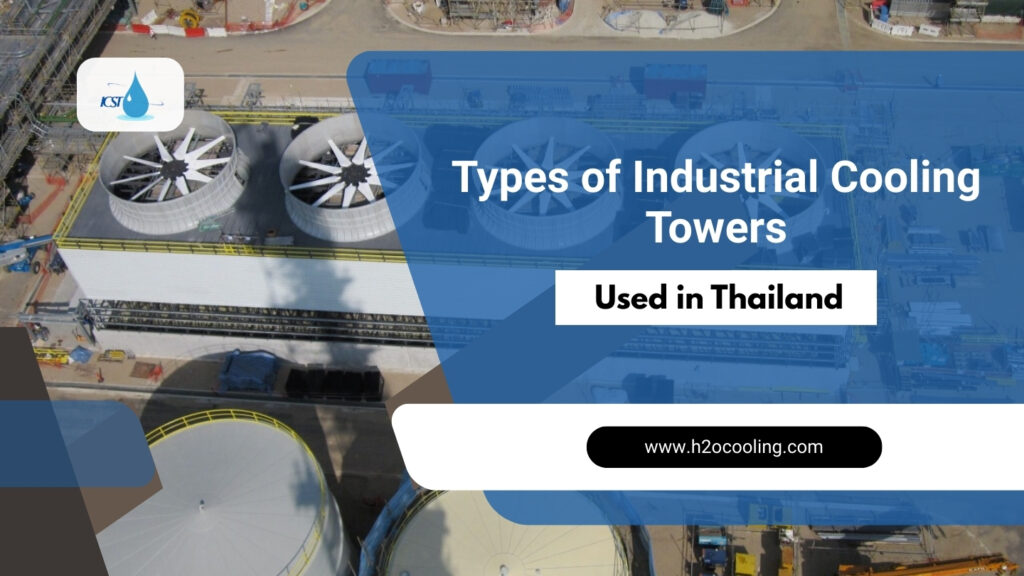
1. Field-Erected Towers
Often seen at large power plants or heavy industrial sites, these are typically huge, often hyperbolic concrete structures. They primarily use natural draft (relying on the temperature difference between the warm air inside and cooler air outside to create airflow) and are built on-site due to their massive scale. They are designed for very high heat loads and harsh conditions.
2. Induced Draft Cooling Towers
These are very common in industrial and HVAC applications. Induced draft towers have fans located at the top which pull air up through the fill media, against the downward flow of water. They are generally energy-efficient and their high exit air velocity helps prevent warm, moist air from recirculating back into the air inlets.
3. Mechanical Draft Cooling Towers
This is a broader category that includes induced draft towers. Mechanical draft simply means fans are used to move the air. The alternative is “natural draft.” Mechanical draft towers offer more precise control over cooling compared to natural draft designs
and are widely used across various industrial cooling tower systems in Thailand. They can also include forced draft designs, where fans at the base push air into the tower.
Cooling Tower Solutions and Applications in Thailand
Industrial cooling towers are versatile workhorses, providing essential cooling across a wide range of sectors vital to Thailand’s economy.

Essential Industrial Cooling Solutions
From power generation to food and beverage processing, petroleum refining, chemical production, and manufacturing facilities, effective cooling is non-negotiable. Industrial cooling towers provide reliable process cooling, ensuring operations stay within safe temperature limits, protecting equipment, ensuring product quality, and enhancing overall efficiency. For instance,
in Thailand’s significant food processing industry, precise temperature control managed by cooling towers is critical for safety and quality standards.
Key Industrial Applications:
- Power Plants: Cooling water used in steam cycles for electricity generation.
- Manufacturing: Cooling machinery, hydraulic oil, and various production processes (e.g., plastics, metals, electronics).
- HVAC Systems: Providing condenser water for large-scale air conditioning in commercial buildings, hospitals, and malls.
- Food Processing: Cooling ingredients, products, and refrigeration systems.
- Petrochemical & Refineries: Managing heat from chemical reactions and refining processes.
- Data Centers: Although sometimes using other methods, cooling towers can be part of the cooling infrastructure for large data centers.
Cooling Tower Rentals and Services in Thailand
Need cooling for a specific project, during maintenance, or as an emergency backup? Cooling tower rentals offer a flexible and cost-effective solution for businesses in Thailand. Beyond rentals, reliable local service providers offering maintenance, repair, and genuine replacement parts are crucial for keeping your permanent industrial cooling tower operating at peak performance and efficiency.
Cooling Tower Design and Construction Considerations
Modern towers are designed for durability and efficiency.

Materials and Customization
Towers today are constructed from materials like galvanized steel, stainless steel, fiberglass (FRP), and engineered plastics. FRP and plastic offer excellent corrosion resistance, vital in Thailand’s humid climate, often requiring less maintenance. Towers can often be customized to meet specific site or process requirements, including the type of spray nozzles and fill media used to optimize water distribution and air contact.
Shapes and Sizes
- Rectangular: Very common, versatile for many industrial and HVAC uses.
- Round: Can be space-saving, sometimes seen in specific applications.
- Square: Often used for larger capacity needs.
- Field-Erected: Custom-built, large-scale hyperbolic or rectangular structures for massive heat loads.
Improving Efficiency
Investing in energy-efficient fan motors, high-performance fill media, and variable speed drives (VSDs) can significantly reduce operating costs. Regular performance audits and smart monitoring systems help ensure your industrial cooling tower runs efficiently.
Critical Maintenance and Repair for Longevity
Like any hard-working equipment, industrial cooling towers need care.
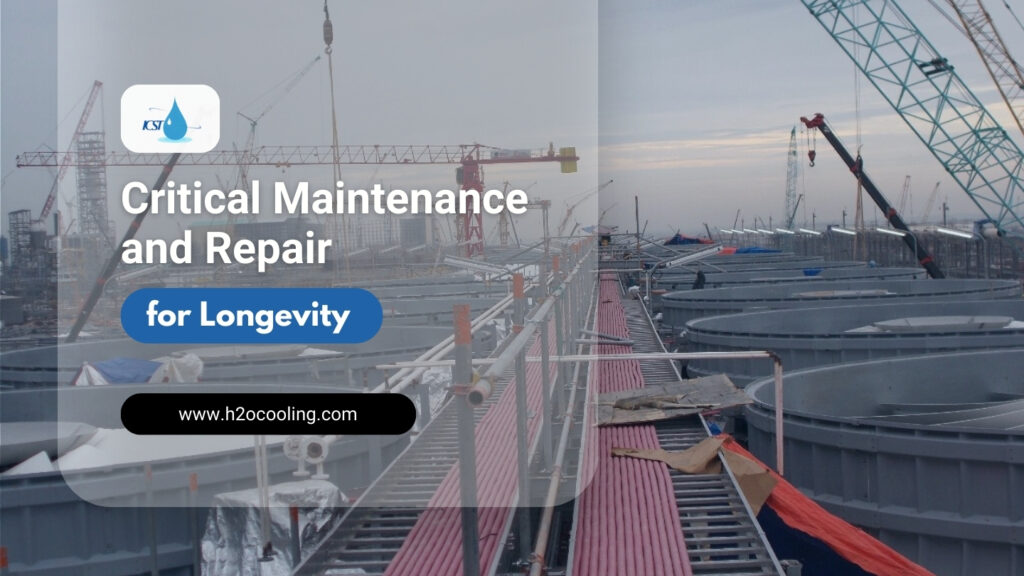
The Importance of Regular Maintenance
Regular inspections and proactive preventive maintenance are key to maximizing the lifespan and effectiveness of your cooling tower in Thailand’s demanding climate. This includes:
- Cleaning: Removing scale, sediment, and biological growth (like algae) from the fill, basin, and drift eliminators.
- Water Treatment: Managing the recirculating cooling tower water chemistry is vital to prevent scale, corrosion, and biological fouling. Authority Link: Learn more about water treatment principles from the Association of Water Technologies (AWT).
- Mechanical Checks: Inspecting fans, motors, belts, gearboxes, and pumps.
- Structural Integrity: Checking for corrosion or damage.
Proper maintenance prevents costly breakdowns, ensures efficient heat exchange, saves energy, and maintains safe operation.
Safety and Environmental Aspects
Operating cooling towers comes with responsibilities.
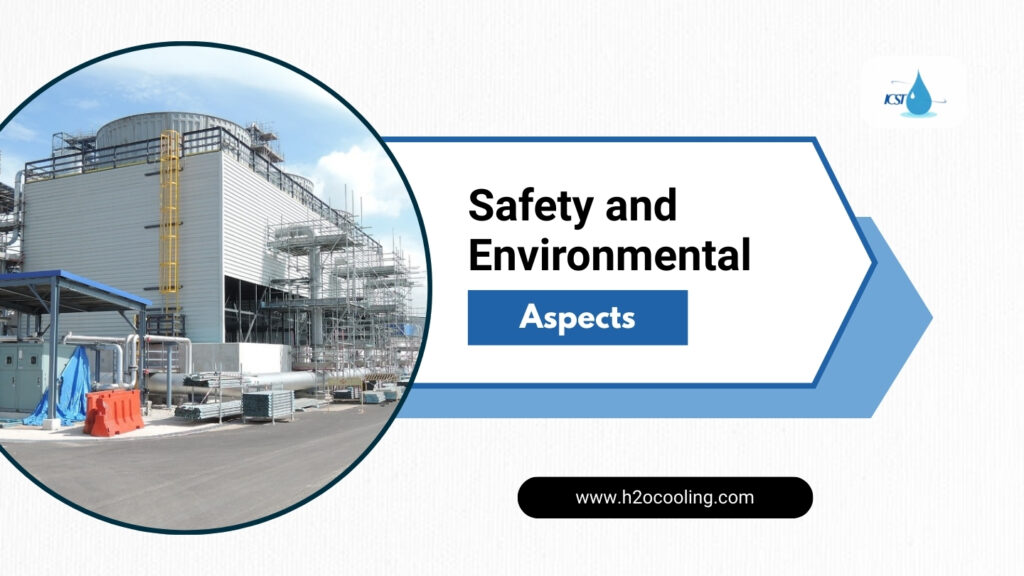
Safety and Public Health Concerns
Cooling towers can potentially become breeding grounds for bacteria like Legionella if not properly maintained and treated. Inhaling contaminated water droplets (drift) can cause Legionnaires’ disease. Therefore, stringent maintenance, regular disinfection, and effective drift eliminators are crucial public health measures. Authority Link: See the CDC’s guidelines on controlling Legionella in cooling towers.
Environmental Sustainability
While essential, cooling towers consume water (through evaporation and bleed-off) and energy. Modern designs focus on minimizing environmental impact by:
- Reducing water loss through high-efficiency drift eliminators.
- Optimizing water usage with effective water treatment and cycles of concentration.
- Lowering energy consumption with efficient fans, motors, and VSDs.
Choosing sustainable designs is increasingly important for industries in Thailand.
Meeting Industry Standards
Reputable industrial cooling towers adhere to strict standards.
CTI Certification
The Cooling Technology Institute (CTI) sets industry standards for thermal performance and testing protocols. CTI certification provides assurance that a cooling tower will perform as rated by the manufacturer, ensuring reliability and efficiency for your application in Thailand.
Final Thoughts: Your Cooling Partner in Thailand
Industrial cooling towers are far more than just equipment; they are fundamental pillars supporting Thailand’s diverse and growing industries. From enabling large-scale power generation to ensuring the smooth operation of manufacturing and food processing plants, their value is immense.
For facility managers, engineers, and industrial leaders in Thailand, understanding the selection, operation, and maintenance of industrial cooling towers is key to optimizing processes, managing costs, and ensuring sustainable operations.
Need expert advice on selecting the right industrial cooling tower for your Thai facility, or require professional maintenance for your existing system? Don’t hesitate to reach out to specialists who understand the local climate and industrial needs. Optimizing your cooling solutions can make a significant difference to your bottom line.
